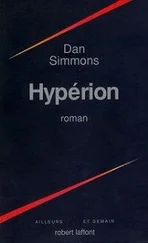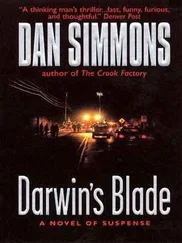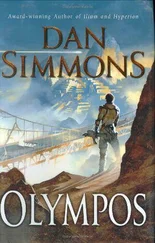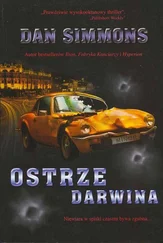All he has to do by next Sunday is hide, in carefully placed and covered positions on and around all three heads, about twenty of the larger crates of dynamite he has hidden in his hovel in Keystone. Oneelectric blasting cap and wire will do for each of the crates. If he prepositions the crates, he will be able to get them up the mountain and hide them and arm them on Saturday night—the flurry of work and activity on Friday and Saturday will be mostly cosmetic, buffing up the stone, especially on Jefferson’s head, and arranging the flag with which Borglum plans to cover the head until the unveiling.
Paha Sapa shakes his head with the simplicity of the solution and his own opacity at not seeing it months—years—earlier. He can blame it now on the rare morphine injections he’s begun to give himself so that he can continue working.
Six more days? Can his five years on the hill, those thousands of days, come down to six more days?
Paha Sapa will not see the aftermath—he plans to go out with the heads in the mighty blast that will be the headline in every newspaper and on every radio broadcast and movie newsreel for weeks—but he knows he will be seen as a villain. For a while he will replace the infamous Bruno Hauptmann, or perhaps that rising new German villain Adolf Hitler, as “Americans’ most hated man.”
Roosevelt, Paha Sapa has heard, is coming to South Dakota and the West purely for political reasons. (Do presidents and other politicians, Paha Sapa wonders, ever do anything for any reason other than political?)
South Dakota had been a Republican state since time immemorial, since bison and those red savages were the only (nonvoting) citizens there, but Roosevelt carried it in 1932 and has no intention of allowing it to go back into the Republican column in the 1936 election, now just two months and a dusty handful of days away. More than merely wooing South Dakotans amid the Depression and the forest fires and the record heat, this will be billed as the jaunty president’s “Dust Bowl tour”—Roosevelt’s first effort to get out and see the havoc that the increasingly perverse climate is wreaking on a huge swath of the nation he rules from Washington and shady Hyde Park—although, Paha Sapa knows, the president’s destinations of Rapid City and Mount Rushmore are many hundreds of miles north of the northern boundaries of the actual, physical Dust Bowl.
While Paha Sapa cuts dynamite sticks into workable lengths—no gloves today for the fine work, so he will have a headache tonight—and prepares the fuses and blasting caps, he remembers his encounter with this so-called Dust Bowl.

BY SPRING OF THE PREVIOUS YEAR, 1935, work on the Monument was shutting down periodically for lack of funding. These funding gaps, often as imagined as real, and the brief work stoppages that came from them were a regular feature of work on Mount Rushmore, and the men were used to them, but this pause in the spring of ’35 was more about Gutzon Borglum’s battles with John Boland (Borglum’s theoretical boss on the commission that oversaw the Rushmore carving) and Senator Peter Norbeck (the greatest supporter that the Monument ever had).
Borglum had never been able to tolerate “supervision” and he was poisoning his own nest that spring with his attacks on Boland, Norbeck, and his other most loyal supporters. So for a few days before Palm Sunday, 1935, Paha Sapa and the other men had neither work on the cliff nor pay coming in.
Then Borglum called Paha Sapa in to inform him that he and Borglum’s son, Lincoln, and two other men would be driving to southern Colorado to pick up two submarine engines.
Paha Sapa had heard about the engines.
The compressors, drills, twenty-some jackhammers, winches, tramway, and other machinery on the mountain needed a tremendous amount of steam and electrical energy, and Borglum had “upgraded” the old powerhouse several times, first moving it from its original location in nearby Keystone to the valley here and then increasing the size of the steam boilers and electrical generators. But, in Borglum’s view, there was never enough power, and recently the sculptor had accused commission member John Boland of shutting down the Insull Plant in Keystone not because it was worn out, as Boland had claimed, but for reasons of private profit.
Senator Norbeck informed Borglum that these sorts of wild attacks on Boland would get the entire project canceled, but Borglum persisted in both his attacks on Boland’s reasons for shutting down the original powerhouse and his lobbying for larger engines, turbines, and generators in the new plant.
The response in the winter of 1934 was that the navy would donate two used but still-functioning diesel engines from a submarine they were decommissioning.
— Probably two pieces of prehistorical junk left over from the Great War!
Borglum had thrown the letter across the room.
Whatever shape the diesels were in, the War Department promptly shipped them to the wrong place. Rather than getting them to Mount Rushmore or to Keystone or to Rapid City, the navy sent them by rail to the Ryan-Rushmore Electrical Works at the Colorado Steel plant in Pueblo, Colorado. And there, on a siding, the two giant banks of engines had sat under a tarp for two months. The Navy and the War Department acknowledged their small error but said that it was Borglum’s problem to get the monstrous things from southern Colorado to South Dakota.
Borglum seemed as distracted and angry as ever when he called Paha Sapa into his office at the studio on April 10.
— Billy, Lincoln’s going to take you and Red Anderson and Hoot Lynch down to Colorado in the pickup truck and the big flatbed Dodge we have on loan from Howdy Peterson’s cousin’s construction company. You’re going to bring back those damned submarine engines.
— OK, Boss. Do we get paid for the trip?
Borglum only stared at him with his most evil eye.
Paha Sapa started over.
— I don’t know how much a submarine engine weighs, Mr. Borglum, but I know we’ll need a crane to get them onto that Dodge’s flatbed. And odds are low to none that the Dodge’s suspension will handle a load that heavy all the way back from Colorado.
Borglum merely coughed his dismissal of that worry.
— The diesel monsters are at a steel plant, Old Man. They’ll have a crane, a ramp, whatever you need to load the things. Lincoln will take care of everything. He’ll have some walking-around money for you and Red and Hoot during the trip. Consider it your vacation for this year. If you leave in the next hour, the four of you can get down into Nebraska tonight before it gets too dark.
Paha Sapa had nodded and gone to find the other three.
They did get into Nebraska that evening, the two vehicles driving due south. Lincoln Borglum led in the Ford pickup truck, Hoot Lynch and Red Anderson both crowded into the passenger side. The two were close friends and disliked missing conversations and neither liked Paha Sapa all that much.
Paha Sapa didn’t mind driving alone, he preferred it actually, but the 1928 Dodge truck with its bug eyes and floating fenders and extended flatbed was a pure pig to drive. The whole vehicle was a dinosaur from earlier design days, including an opening slab of windshield that had to be battened down with brass clamps. The clamps were gone, the windshield never completely closed, and the result was that if they were lucky enough to find a patch of highway where they could drive thirty miles per hour, the cold air poured in over Paha Sapa. He was wearing his son’s leather motorcycle jacket and his heaviest gloves, but his fingers were numb after just the first twenty-five miles, and the big truck steered so poorly that his arms ached abysmally from the exertion by the end of that first afternoon and evening.
Читать дальше













